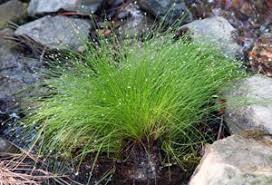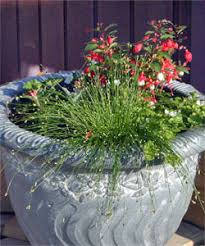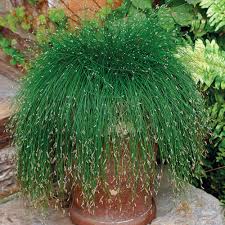Fiber Optic Grass, also known as Isolepis cernua, is a unique and charming grass plant that adds a touch of magic to gardens and indoor spaces. With its delicate appearance and enchanting glow, Fiber Optic Grass is a favorite among garden enthusiasts and those seeking to bring a bit of nature indoors.
This special plant derives its name from the thin, hair-like strands that resemble fiber optics and emit a soft, radiant light. The grass is not actually luminous, but its tips capture and reflect light in a way that creates a mesmerizing effect. It’s as if tiny stars have been sprinkled throughout the grass, making it a wonderful addition to any setting.
Fiber Optic Grass is a small plant, usually growing only a few inches tall. Its slender, green stems sway gracefully, adding movement and elegance to its surroundings. It’s often used in pots, hanging baskets, or as a ground cover in garden beds. Due to its compact size, it’s an ideal choice for terrariums and miniature landscapes.
Caring for Fiber Optic Grass is relatively simple, making it suitable for both novice and experienced gardeners. It thrives in bright, indirect light, making it perfect for indoor spaces with plenty of sunlight. Keep the soil consistently moist, but not soggy, as excessive water can harm the plant. If you’re growing it outdoors, ensure it’s in a well-draining soil to prevent waterlogging.
To maintain the plant’s vibrant appearance, it’s recommended to trim the tips of the grass occasionally. This not only encourages new growth but also helps maintain its fiber optic-like effect. Fertilize the plant with a balanced liquid fertilizer every few weeks during the growing season to support its health and vitality.
Fiber Optic Grass is not just a plant, but a conversation starter. Its unique visual appeal and easy care requirements make it a popular choice for both homes and public spaces. Whether placed on a windowsill, in a garden, or as part of a larger landscape, this grass brings a sense of wonder and tranquility wherever it resides. So, whether you’re a seasoned gardener or just starting out, consider adding Fiber Optic Grass to your collection a little piece of enchantment that brightens up your world.
Read Also: How to Permanently Control Bugs and Prevent Future Infestations
Growing and Care Guide of Fiber Optic Grass

Here’s a growing and care guide for Fiber Optic Grass:
Growing Fiber Optic Grass
1. Choosing the Right Location: Fiber Optic Grass thrives in bright, indirect sunlight. Whether you’re growing it indoors or outdoors, find a spot that receives ample light without direct exposure to harsh sunlight.
2. Selecting a Container or Planting Area: If growing indoors, choose a pot with good drainage. If planting outdoors, ensure the soil is well-draining to prevent waterlogged roots.
3. Planting: Fill the chosen container with a well-draining potting mix. Gently remove the Fiber Optic Grass from its nursery pot and place it in the new container. Position the plant at the same depth it was in the nursery pot and fill the space around it with soil. Gently press the soil down to secure the plant.
Caring for Fiber Optic Grass
1. Watering: Keep the soil consistently moist but not soggy. Allow the top inch of the soil to dry out slightly before watering again. Be cautious not to overwater, as this can lead to root rot.
2. Light: Place the plant in a location with bright, indirect sunlight. Avoid placing it in direct sunlight, as this can scorch the delicate leaves. If you notice the plant’s growth slowing down or the color fading, it might be an indication that it needs more light.
3. Temperature: Fiber Optic Grass prefers moderate temperatures. Avoid exposing it to extreme cold or hot conditions.
4. Humidity: This plant appreciates higher humidity levels. If you’re growing it indoors, consider placing a humidity tray or misting the plant occasionally to provide the moisture it needs.
5. Fertilizing: During the growing season (spring and summer), feed the Fiber Optic Grass with a balanced liquid fertilizer every 4-6 weeks. Follow the manufacturer’s instructions for dilution and application.
6. Pruning: To maintain the plant’s appearance and encourage new growth, trim the tips of the grass periodically. This also helps preserve the fiber optic-like effect.
7. Pests and Diseases: Keep an eye out for pests such as aphids, mealybugs, or spider mites. If you notice any issues, treat the plant with insecticidal soap or neem oil. Ensuring proper air circulation can help prevent fungal diseases.
8. Repotting: As the Fiber Optic Grass grows, it might outgrow its container. If you notice the plant becoming root-bound or the growth slowing down, consider repotting it into a slightly larger container with fresh potting mix.
Remember, while Fiber Optic Grass is relatively low-maintenance, each plant is unique. Pay attention to its growth, appearance, and the conditions it’s in to provide the best care possible. With proper attention, you’ll enjoy the magical and radiant presence of this charming plant in your space.
Benefits of Fiber Optic Grass

Here are some benefits of having Fiber Optic Grass:
1. Aesthetic Appeal: Fiber Optic Grass adds a unique and enchanting touch to any setting. Its delicate, luminous appearance resembles a field of tiny stars, making it a visually captivating addition to gardens, indoor spaces, and even terrariums.
2. Low Maintenance: This plant is relatively easy to care for, making it an excellent choice for both experienced and novice gardeners. Its simple care requirements include moderate watering, indirect sunlight, and occasional pruning.
3. Indoor Decoration: Fiber Optic Grass thrives indoors with bright, indirect light. Its compact size and striking appearance make it a popular choice for decorating windowsills, tabletops, and other indoor spaces.
4. Outdoor Landscaping: In outdoor spaces, Fiber Optic Grass can be used as a ground cover, border plant, or in hanging baskets. Its gentle swaying in the wind adds movement and elegance to garden beds or landscape designs.
5. Educational Value: Fiber Optic Grass can be a great teaching tool for children and learners interested in botany. Its unique growth pattern and fiber optic-like appearance can spark curiosity and encourage learning about plants.
6. Conversation Starter: Its mesmerizing appearance often leads to conversations and compliments from visitors. It can serve as an interesting focal point in your home or garden, sparking discussions about its distinct features.
7. Stress Reduction: Like all plants, Fiber Optic Grass contributes to improved indoor air quality by releasing oxygen and absorbing carbon dioxide. The act of caring for plants has also been shown to have stress-reducing benefits.
8. Flexible Placement: Due to its small size, Fiber Optic Grass can be placed in various containers, from traditional pots to hanging baskets and terrariums. This versatility allows you to incorporate it into different design themes.
9. Ideal for Limited Spaces: If you have limited outdoor space or live in an apartment, Fiber Optic Grass can provide a touch of nature without taking up much room.
10. Therapeutic Hobby: Tending to plants, including Fiber Optic Grass, can be a therapeutic and rewarding hobby. It offers a sense of accomplishment as you watch the plant thrive and flourish under your care.
Remember that while Fiber Optic Grass offers several benefits, each individual’s experience with the plant may vary. Its unique appearance and easy maintenance make it a delightful addition to any space, enhancing its ambiance and offering a touch of natural wonder.
Read Also: All You Need To Know About Grass Hoppers
Where to Find Fiber Optic Grass near Me/You

Here are three perfect places to find or locate Fiber Optic Grass:
1. Indoor Living Spaces: Fiber Optic Grass is an excellent choice for indoor areas with bright, indirect light. It can thrive on windowsills, shelves, or as a centerpiece on tables. Its unique appearance adds a touch of natural beauty and conversation to your living room, bedroom, or even your office.
2. Terrariums and Miniature Gardens: Create a captivating miniature landscape by incorporating Fiber Optic Grass into a terrarium or fairy garden. Its small size and enchanting glow make it a perfect fit for these tiny ecosystems. The grass’s delicate strands can mimic miniature trees or grassy areas, enhancing the overall charm of your miniature world.
3. Garden Borders and Edges: In outdoor spaces, Fiber Optic Grass works well as a border plant or edging along garden pathways. Its gentle movement and unique visual appeal add interest to garden beds, and its compact size prevents it from overwhelming other plants. Placing Fiber Optic Grass along garden borders can create a whimsical and inviting atmosphere in your outdoor area.
These locations offer ideal conditions for Fiber Optic Grass to thrive and showcase its enchanting features. Whether indoors or outdoors, in containers or directly in the ground, this plant can transform any space into a magical and captivating environment.
Read Also: Characteristics and Marketing Strategies for Consumer and Industrial Products
